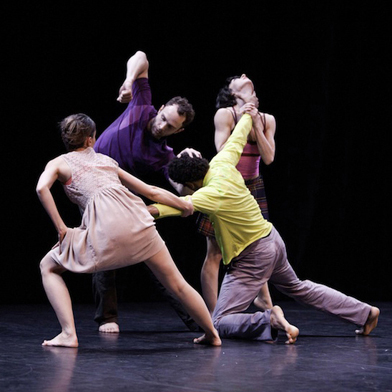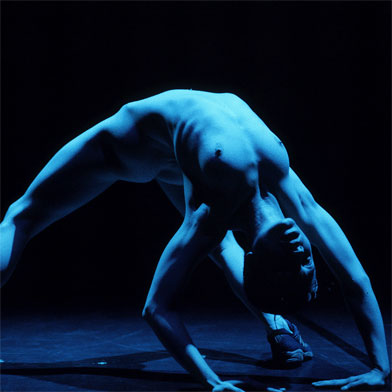Composer Bruno Liberda sets up complex systems of silent analog feedback loops and communicating between Kyma and analog electronics through voice and an Obi-gong in his new work, Buddha cannot sit quietly anymore, premiered at 21h on 4 March at Elektro Gönner Mariahilfer Straße 101/1060 in Vienna. In analog electronics, exploring resonance phenomena, self-oscillation, over-driven filters can fling us either into the abyss, or into Seventh Heaven, depending on tiny variations in initial conditions and control signals. However, with Kyma in the cockpit, one gains (intuitive) control over this supersonic flight. In Buddha… there are in fact no sound-producing sources in the analog domain, but only a whispering speculation: what happens if some feedback loops are short-circuited through the winding paths and controlled from Kyma?

In the last few days, a rapidly aged circuit diagram illustrates the main issue: a 4-pole resonant filter, whose input is fed by analog delay.  As the latter needs some material to delay, it is fed by the resonant filter itself.  In order to avoid a simple short-circuit, the delay travels through a bit- and sample-shredder, before getting injected back into its own feedbackloop…. So the dance is not simple short-circuits; it is the feedback of the delay, sharpening the edges of the filter cutoff, losing a few bits, changing the sample rate. This in turn has interesting implications for the input of the resonant filter, and a complex dance is set in motion; the dance leads to new vibrations, more or less under the composer’s reins.
In Liberda’s new work, it’s not just that Buddha cannot sit quietly anymore; he is sitting on a powder keg!

 Einstein taught his uncle how to ride a bicycle, and, soon, choreographerÂ
Einstein taught his uncle how to ride a bicycle, and, soon, choreographer 

 Choreographic pianist
Choreographic pianist 




